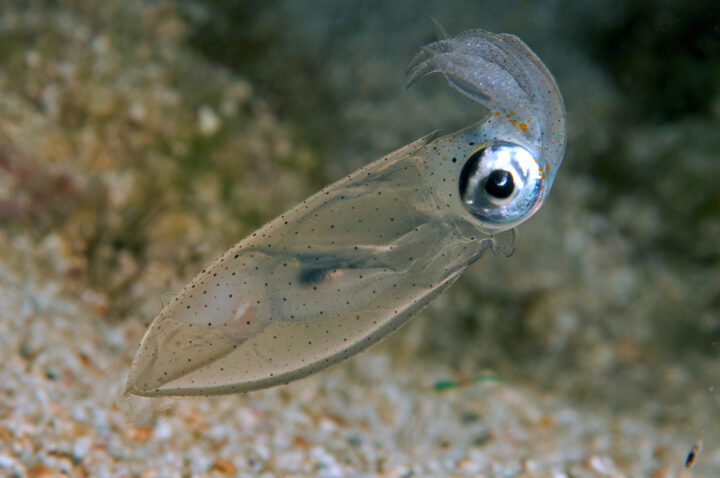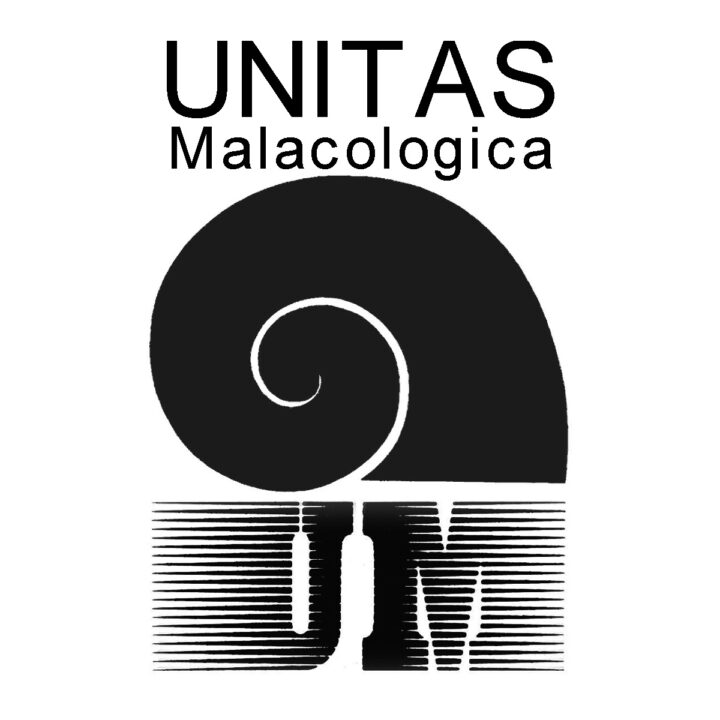International
Mollusc of the
Year 2024
from March 13th (11:00 CET) to April 14th (23:59 CET).
The results will be announced in an official press release on April 18th.
The results will be announced in an official press release on April 18th.
The International Mollusc of the Year competition was started in 2021 by the LOEWE Centre for Translational Biodiversity Genomics (LOEWE-TBG) and Senckenberg together with Unitas Malacologica (the society for worldwide malacologists and malacology). The main objective of the competition is to increase awareness of the vast diversity of molluscs and the importance of their protection, as well as to celebrate their remarkable characteristics and inspire fascination for molluscs worldwide. The winning mollusc is chosen through a public vote, and the “prize” includes complete genome sequencing of the species by LOEWE-TBG.
Further information: https://tbg.senckenberg.de/mollusc-of-the-year/
The snail from Thailand won more than half the votes, beating two other snail species, a mussel, and a small squid. Phuphania crossei is an air-breathing land snail found only in the tropical forests of Thailand. It takes its name from the Phu Phan mountains in the north-east of the country. Its special feature is that it constantly produces its own bioluminescent light, emitting a greenish glow like a living glow stick. At first glance, Phuphania crossei is a normal looking snail, with a yellowish-brown body and a dark grey head with eyes on stalks. Its shell is brownish with distinct ribs. However, even in daylight and without stimulation, its greenish glow is visible to the human eye. The glow is produced by light cells on the foot and the mantle. The snail can switch off this glow temporarily.

Welcome to the fascinating world of molluscs! From snails and slugs to mussels and clams, octopus and squid – these creatures are as diverse as this year’s five finalists. Explore their profiles, discover their fascinating features, and uncover what secrets the sequencing of their genome will reveal.
Once you’ve picked your favorite, vote for it by clicking the white button and confirming your email address. Thank you for joining us in bringing these remarkable molluscs to the attention of the public and scientific community! Feel free to share the campaign on social media and spread the word to others.





The phylum of molluscs originated approximately 500 million years ago. Many species are still waiting to be discovered today, and even the known species are far from being fully explored. From a conservation perspective it is important to better understand their evolutionary development, relationships, adaptations, and behavioural patterns. Genomic analyses can answer many open questions – but so far there are only relatively few mollusc species whose genome has been sequenced. This is where the international competition “International Mollusc of the Year” comes in.
The International Mollusc of the Year 2023 – Concholepas concholepas, the Chilean Abalone
Concholepas concholepas belongs to the family of Murex snails, which are mostly much more spectacular seashells; Concholepas is found in the south-eastern Pacific and adult specimens can reach a shell length of about 15 centimetres. As a carnivore, it plays the role of a keystone species that controls the occurrence of other species. Known in its native country as “Loco” (a loanword of the Mapuche people in Chile), the snail with the large foot and tough shell has great cultural, social, economic, evolutionary, and ecological importance there. But its stocks are endangered due to severe overfishing, as the Chilean Abalone is traded worldwide as a delicacy.
Press release

The International Mollusc of the Year 2022 – Polymita picta, The Cuban painted snail
The two to three centimetre Cuban painted snail is known for the colourful variations of its shell. It also has an enigmatic “love arrow” – a chalk arrow used to stab mating partners in order to transfer sex hormones. The snails are male and female at the same time, without being able to fertilise themselves, and reproduce during the rainy season. They live for about one to two years. The Cuban painted snail is only found along a narrow coastal strip in eastern Cuba. There, however, it inhabits a wide range of habitats, from extremely dry sites to rainforests. It feeds on moss and lichens on tree bark. In this way, it helps to keep trees healthy and thus supports local agriculture. Due to habitat loss and poaching, it is considered endangered.
Press release

The International Mollusc of the Year 2021 – Argonauta argo, The Greater Argonaut
Argonauta argo has been called the “most romantic” mollusc, evoking long sea voyages and a spirit of adventure. The Greater Argonaut is a type of pelagic octopus, which lives close to the surface, with only a passing resemblance to its more familiar octopus cousins that live on the seafloor. The female Argonaut has specially adapted arms that look like oars and secrete a paper-thin porcelain shell. The unique shell serves her as a boat and also a protective case for her eggs. The male of the species is very different, and much smaller than the female. Argonauts are also voracious predators, they bite their prey and inject a poison produced in their salivary gland.
Press release

Nominations for the International Mollusc of the Year competition are open all year round! In January, Senckenberg/LOEWE-TBG and Unitas Malacologica will select 5 top molluscs from the nominations, and the final winner will be determined by a public vote in early 2025. The nomination form is available at https://sgn.one/475
The LOEWE Centre for Translational Biodiversity Genomics (TBG) is a joint research institution of the Senckenberg Society for Nature Research, the Goethe University Frankfurt, the Justus Liebig University Gießen and the Fraunhofer Institute for Molecular Biology and Applied Ecology IME. Further partners are the Fraunhofer Institute for Translational Medicine and Pharmacology ITMP and the Max Planck Institute for Terrestrial Microbiology. Central focus of the centre is on expanding biodiversity research into the genomic basis of biological diversity. The aim is also to combine basic research on the genomes of a broad variety of organisms with the development of applicable services and products. The centre is funded by the Hessian State Initiative for the Development of Scientific and Economic Excellence, called LOEWE.
Further information: https://tbg.senckenberg.de

The Senckenberg Society for Nature Research is an institution of the Leibniz Association and has been researching the “System Earth” worldwide for over 200 years – in the past, the present and with forecasts for the future. We conduct integrative “geobiodiversity research” with the aim of understanding nature with its infinite diversity in order to preserve it as the basis of life for future generations and to use it sustainably. In addition, Senckenberg communicates research results in a variety of ways, especially in the three nature museums in Frankfurt, Görlitz and Dresden. The Senckenberg Nature Museums are places of learning and wonder, and they serve as open platforms for democratic dialogue – inclusive, participatory and international.
More information at www.senckenberg.de

Unitas Malacologica is the society for worldwide malacologists and malacology. Its aim is to further the study of Mollusca by individuals, societies and institutions worldwide. The purpose is realized in particular by the organization of international congresses, usually the World Congress of Malacology in three-year intervals, and awarding grants and prizes to young researchers in the field of malacology. More information: http://www.unitasmalacologica.org/

Sequencing partner:
Bioscientia Institut für medizinische Diagnostik GmbH
